The origins of baseball can be traced back to various similar games played in different countries throughout history. While the exact origin of baseball is still debated, it is widely believed to have evolved from those earlier games such as rounders, cricket, and town ball.
After centuries, this resulted in the modern baseball we know today. From seker-hemat to Babe Ruth, and from the Chicago White Sox to Cuban baseball superstars, the sport has an ongoing legacy and has impacted many lives.
Table of Contents
What are the True Origins of Baseball?
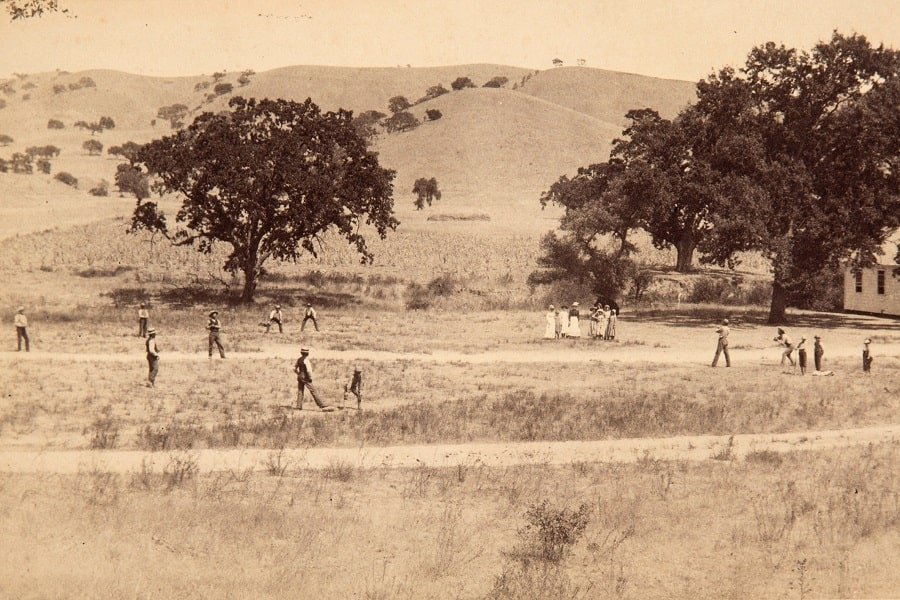
The origins of baseball are various bat-and-ball games played throughout history. It’s a bit hard to point in one direction, but baseball evolved from a couple of English games like rounders, cricket, and town ball. Games resembling baseball were already played in ancient Egypt, Persia, and Greece. Through the efforts of early baseball enthusiasts and the establishment of organized leagues, baseball became the game we know today.
Those ancient civilizations used a stick or club to hit a ball. However, the earlier versions of the sport in no way resembled the game we know today. The actual sport we recognize as baseball only emerged in the 18th and 19th centuries.
By this time, there was already a myriad of predecessors that resembled baseball more, such as rounders, cricket, and town ball. These games involved elements such as batting, running bases, and fielding, the element that also became fundamental to baseball.
How Long Has Baseball Been Around?
Baseball has a rich history spanning over 150 years. The game’s roots can be traced back to the mid-19th century in the United States, where it began to take shape as a distinct sport. Still, ancient civilizations also played similar games. In ancient Egypt, there was a game known as seker-hemat or ‘batting the ball’. Similarly, in ancient Greece, there are references to various ball games that involved hitting or throwing a ball, such as sphairistikè.
These games involved elements of batting, throwing, and running, but the rules and gameplay details are not well-documented. While some scholars argue that these ancient Egyptian and Greek games might have influenced the development of modern sports like baseball, the direct lineage is oftentimes difficult to establish.
Modern Predecessors of Baseball

One popular theory regarding the origins of baseball attributes its creation to the English games of rounders. Rounders dates back to the 16th century and involves players using a bat to hit a ball while running bases to score runs.
British immigrants who settled in North America likely brought the game with them, where it would evolve into something that resembled modern baseball.
Another theory points to the influence of cricket on the development of baseball – another British game that originated in the 16th century. In a sense, it’s not hard to see how the two resemble each other.
Cricket involves a batsman hitting a ball and running between wickets to score runs. So the very basics of the games do resemble one another quite a bit. It is believed that early versions of baseball were played by cricket players, who modified the rules to create a faster-paced game.
Town Ball
Town ball is another major influence on the modern game called baseball. The origins of baseball can be traced back to the popular game of North America since town ball also featured bases, a pitcher, and a batter. It is possible that the town ball also functioned as an intermediary between modern baseball and sports like cricket and rounders.
Why is Baseball Called Baseball?
The term ‘baseball’ originated from the combination of the two primary elements of the game: the bases and the ball. The term ‘baseball’ itself was coined in the United States during the early development of the sport in the 18th and 19th centuries. After the game grew in popularity and formalized its rules, the term became a widely accepted name.
Who Invented Baseball and Where Did It Begin?
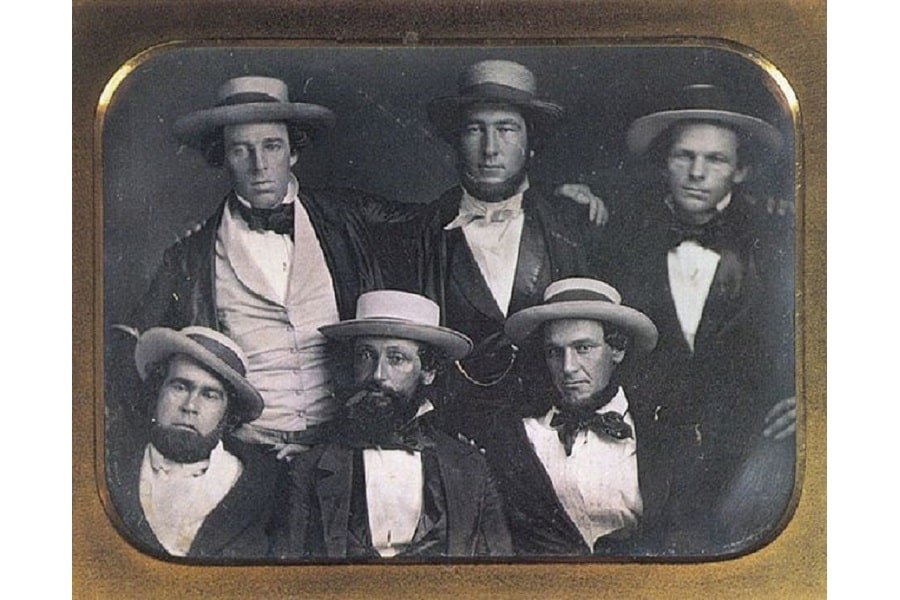
Baseball historians agree that baseball originated in North America, particularly in the United States. It was in the United States that baseball took shape and developed into its modern form. The sport gained significant popularity and recognition in the mid-19th century, particularly in the New York City area. For example, the formation of the New York Knickerbocker Base Ball Club in 1845 is a significant milestone in baseball’s history.
In fact, it is oftentimes considered the single most important moment in the sport’s development. This mainly has to do with the fact that the Knickerbocker Club established a set of rules that influenced the future structure of baseball.
The true ‘inventor of baseball’ and the specific individuals who ‘played the first-ever game of baseball’ are topics of great debate. The game we know as baseball originated in the USA and the first set of rules was formulated by a committee consisting of Alexander Cartwright, Daniel Adams, William H. Tucker, and others. Especially Alexander Cartwright is considered an important figure, earning him the nickname ‘father of baseball’.
So while the creation of baseball isn’t attributable to one specific character, Alexander Cartwright might be a good pick if you really want one. He was a member of the New York Knickerbockers and played a crucial role in formalizing the rules of the game. Of course, this contributed heavily to the very foundation of baseball.
Still, while Cartwright’s contributions were significant, the origins of baseball’s rules were an evolutionary process. The game’s rules, popularity, and structure were shaped by the collective efforts of various players and teams during the middle of the 19th century.
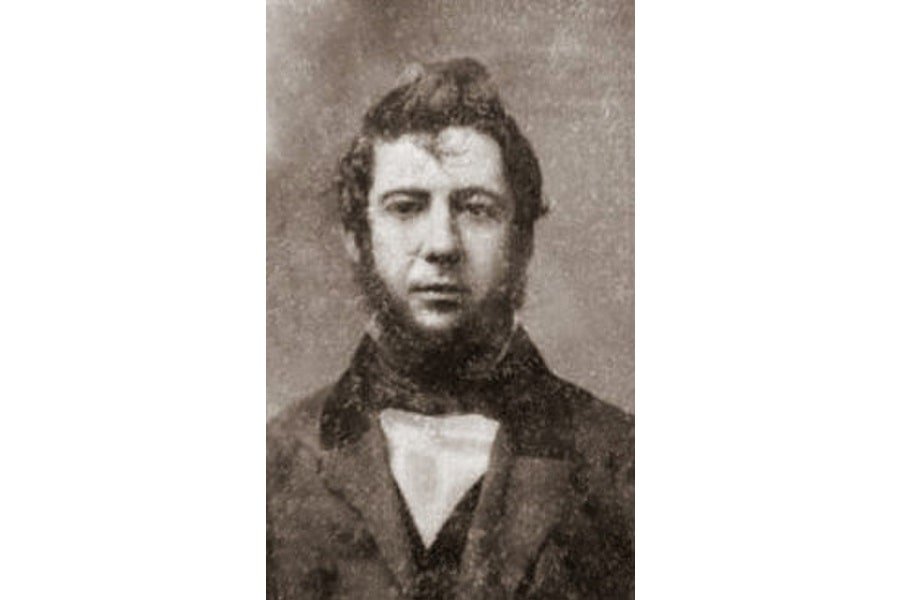
First Official Game of Baseball
The very first official game of baseball is equally hard to pin down. Writers of the game’s history often refer to a specific game played in Hoboken, New Jersey, on the 19th of June in 1846. The contest featured the Knickerbocker Club against a team called the Gotham Base Ball Club.
The match between the two teams drew many spectators from New York and beyond. The game itself was played in a friendly and competitive spirit, showcasing the early enthusiasm for the sport and the evolving nature of the game.
While the specifics of the end score are unclear, the first baseball game marked the beginning of a new era for the sport. It set a precedent for future games and paved the way for formalization while spreading baseball as a popular pastime.
The Knickerbocker Rules: Crucial to the History of Baseball
The rules with which the two teams in the first baseball game played are nowadays known as the Knickerbocker Rules; the very rules that were developed by Cartwright and co. It introduced concepts such as a diamond-shaped field, three strikes for an out, and nine players per team. The rules were not immediately adopted by all baseball clubs, however.
Variations to the rules continued to exist, and different regions and clubs often had their own rules, resulting in a lack of uniformity in gameplay. However, the Knickerbocker Rules gained recognition and became influential in shaping the future direction of the sport.
As baseball’s popularity grew, there was a push for standardized rules to facilitate consistent and organized play in minor leagues. In 1857, the National Association of Baseball Players (NABBP) was formed, aiming to establish a governing body and a unified rulebook for baseball.
In 1858, the first official set of rules, known as the “Laws and Regulations of the Game,” was published. These rules incorporated various elements from the Knickerbocker Rules and other prevailing practices at the time.
The installment of the nine innings was also introduced with this latest set of rules. As you might know, this is one of the rules that has never been changed since. However, even with the publication of the rulebook, regional variations and disagreements persisted.
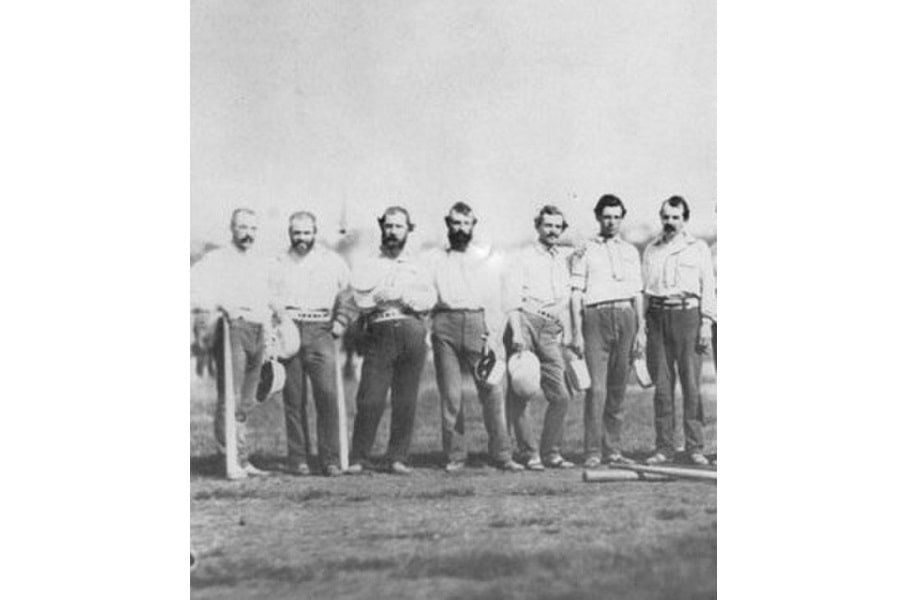
Regional Variations in Baseball
While the baseball diamond was already adopted by NABBP, there were still vast disagreements on the rules and the measurements of the field. For example, in New England, the Massachusetts Game of Baseball was played on a rectangular field and featured overhand pitching.
It shared similarities to the New York Game. However, a quite remarkable feature of the Massachusetts Game was that fielders had the ability to put out a baserunner by striking him with a thrown ball.
Most field players nowadays can throw the ball at about 100 kilometers (60 miles) per hour or more. Abolishing this particular rule might’ve been for the better if we take into account the health of the player. Still, this unique element added an exciting dynamic to the game. It required fielders to not only rely on their defensive skills but also on their accuracy and throwing ability.
Evolving Into Universal Rules
Another difference in rules was that the New York Game employed underhand pitching, while in Massachusetts overhand pitching was required. Eventually, however, the New York Game’s diamond-shaped field and underhand pitching mechanics laid the foundation for the modern game of baseball.
These elements, along with other rule developments, would later be adopted and standardized by the National League and subsequent professional baseball organizations. The variations in regional games really show the organic and evolving nature of baseball’s early development, showing that it was ‘just another game’ in the beginning.
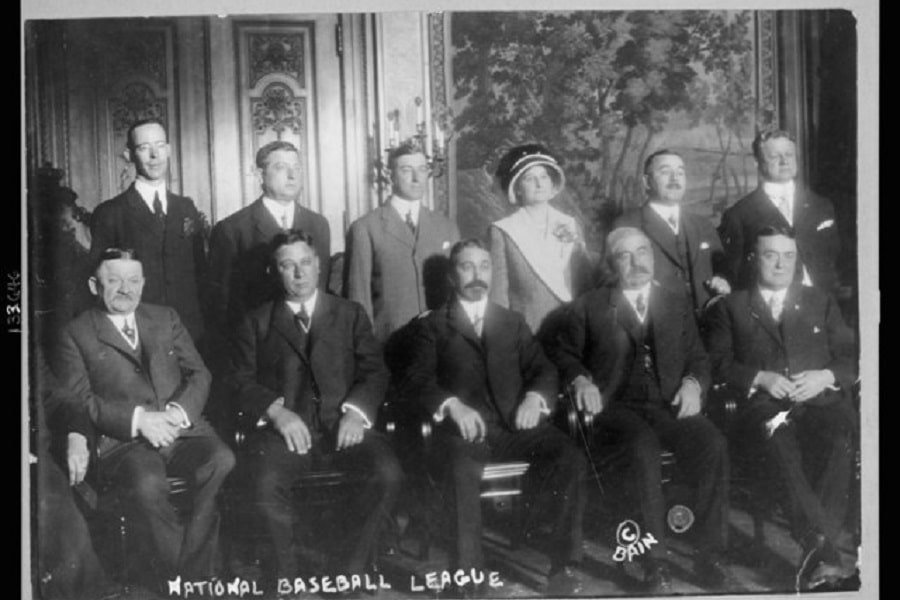
From Informal to Formal
The growth of baseball from an informal sport to a formalized and organized sport was a gradual process that spanned several decades. Initially, baseball was played in an informal manner, with different regions and communities having their own variations of the game and rules.
In the early 19th century, baseball games were often played by amateurs on open fields, schoolyards, or vacant lots. These games were generally spontaneous and lacked rules and regulations. So on the one hand, we have contesting rules between regions. On the other hand, we have a lack of rules altogether.
As the popularity of baseball grew, there was a need to establish uniformity in gameplay and create a more structured and organized environment for the sport. Eventually, actual steps were made to establish a uniform form of baseball.
National Association of Base Ball Players
In 1857, the National Association of Base Ball Players (NABBP) was established, becoming the first organized baseball league. The quest for standardization was enhanced by the codification of the rules that was implemented by the Committee on Rules of the NABBP in 1877.
This resulted in the adoption of a more refined and unified set of rules that set the stage for the further development of baseball. So only from here, the ability to create major leagues in baseball became a real thing.
Early Clubs of Baseball

And so, formal clubs started to sprout. In 1869, the Cincinnati Red Stockings became the first major league team, marking a turning point in the sport’s history. Still, some more informal clubs continued to provide a platform for players to come together, establish rules, and organize competitive matches.
The NABBP aimed to provide structure and regulation to the game by creating a governing body and developing a rulebook. While it was an amateur organization, the NABBP played a crucial role in the professionalization of baseball. It introduced concepts like the fly rule, base-running rules, and the nine-inning game.
First Major League Baseball
The National League, formed in 1876, becoming the first major league baseball competition.
The first National League champions in baseball were the Boston Red Stockings, now known as the Atlanta Braves. The inaugural season of the National League took place in 1876, marking the formation of the first recognized league in baseball history.
Led by player-manager Harry Wright, the Boston Red Stockings had a dominant season, finishing with a league-best record of 52 wins and 14 losses.
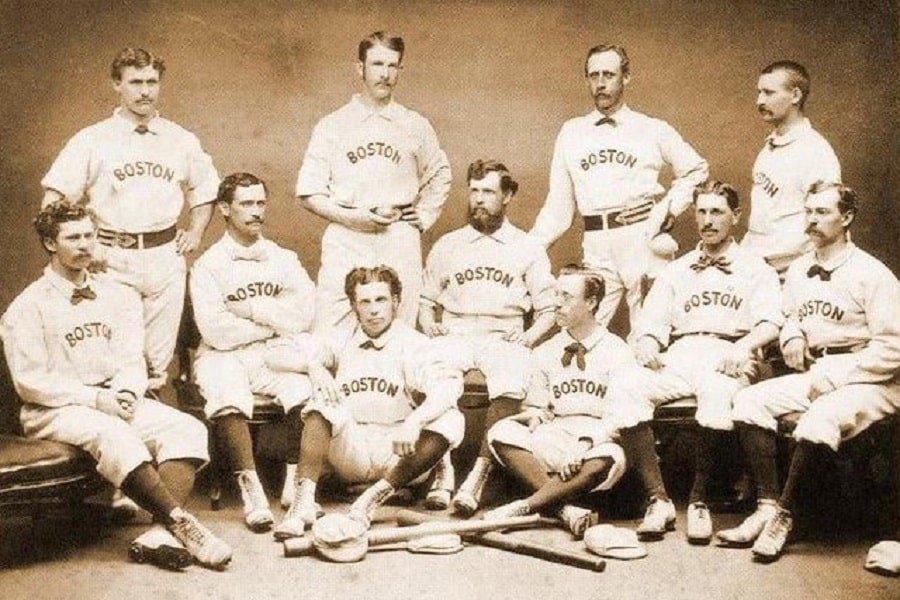
Contested Rules and Disagreement
While the NABBP was all nice and well, it remained an amateur organization. Maybe because of this, the setup of the National League also saw quite some pushback.
With the installment of the American League in 1901, the first actual league with consensus about its rules and organization was established. The question remains, why was the American League accepted as a legitimate major league by professional baseball clubs while the National League wasn’t?
The main reason is that there were concerns about the National League’s monopolistic practices, high ticket prices, and the quality of its stadiums. The creation of the American League in 1901 was spearheaded by a group of influential individuals, including Ban Johnson, a former minor league executive.
Johnson’s Vision for the American League
Johnson aimed to establish a league that would provide a more fan-friendly and affordable baseball experience. His entrepreneurial vision and determination played a crucial role in the American League’s success.
Because he also had some convenient connections, Johnson was able to get plenty of financial backings to realize his vision. And that was also Johnson’s advantage in general: he actually had a strong vision, with marketing strategies and all.
The American League implemented innovative player recruitment strategies, including enticing players from the National League with higher salaries and improved working conditions. This led to a significant talent shift in his league. Obviously, this influx of talent added to the league’s appeal and contributed to its growing popularity.
Another clever marketing strategy was the emphasis on competitive balance. The league’s ability to let competitive teams play each other helped foster exciting rivalries, such as the New York Yankees versus the Boston Red Sox. These rivalries generated heightened interest and fan loyalty, further fueling the league’s growth and popularity.
The growth of media coverage, advancements in transportation, and the construction of dedicated baseball stadiums further contributed to the formalization and commercialization of the sport. Baseball became a more organized and spectator-oriented game, attracting fans from various backgrounds and regions.
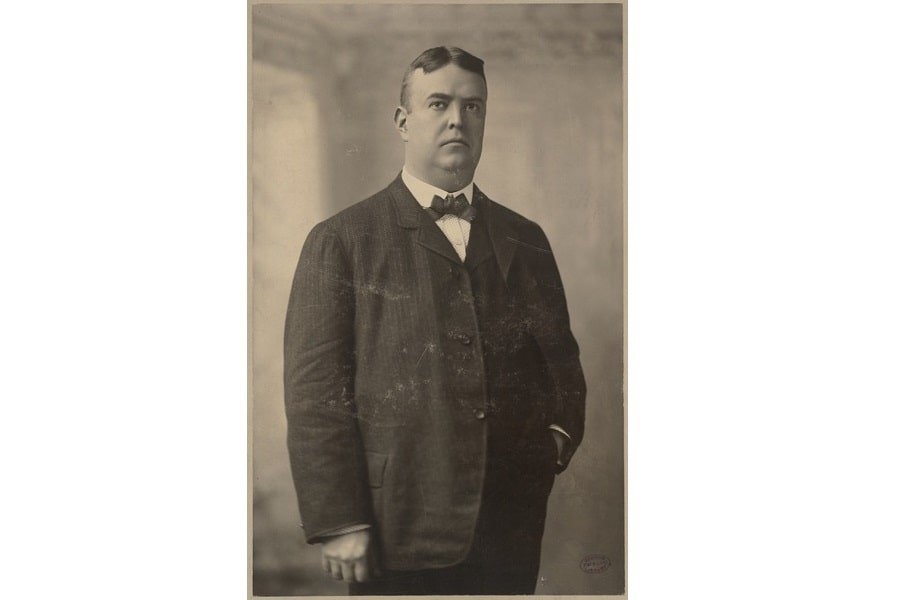
Global Recognition and Spread
Baseball isn’t restricted to just North America. Many Caribbean islands as well as many Latin American Countries and Japan have deep-rooted baseball cultures. Oftentimes, the sport forms a part of the actual identity of the nation.
Due to the spread of baseball, national teams started to emerge, leading to the first baseball world cup in 1938. The spread of baseball to the Caribbean, Latin America, and Japan is a testament to the global appeal and cultural impact of the sport.